Related Research Articles
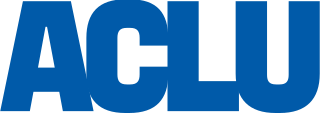
The American Civil Liberties Union (ACLU) is an American nonprofit human rights organization founded in 1920. The organization strives "to defend and preserve the individual rights and liberties guaranteed to every person in this country by the Constitution and laws of the United States." The ACLU works through litigation and lobbying and has more than 1,800,000 members as of July 2018, with an annual budget over $300 million. ACLU affiliates are active in all 50 states, Washington, D.C., and Puerto Rico. The ACLU provides legal assistance in cases where it considers civil liberties at risk. Legal support from the ACLU can take the form of direct legal representation or preparation of amicus curiae briefs expressing legal arguments when another law firm is already providing representation.
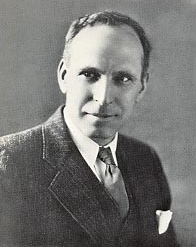
Roger Nash Baldwin was one of the founders of the American Civil Liberties Union (ACLU). He served as executive director of the ACLU until 1950.
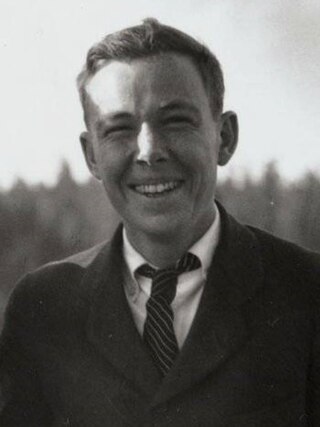
Corliss Lamont was an American socialist and humanist philosopher and advocate of various left-wing and civil liberties causes. As a part of his political activities, he was the Chairman of National Council of American-Soviet Friendship, starting from the early 1940s.
The Civil Rights Congress (CRC) was a United States civil rights organization, formed in 1946 at a national conference for radicals and disbanded in 1956. It succeeded the International Labor Defense, the National Federation for Constitutional Liberties, and the National Negro Congress, serving as a defense organization. Beginning about 1948, it became involved in representing African Americans sentenced to death and other highly prominent cases, in part to highlight racial injustice in the United States. After Rosa Lee Ingram and her two teenage sons were sentenced in Georgia, the CRC conducted a national appeals campaign on their behalf, their first for African Americans.

Elizabeth Gurley Flynn was an American labor leader, activist, and feminist who played a leading role in the Industrial Workers of the World (IWW). Flynn was a founding member of the American Civil Liberties Union and a visible proponent of women's rights, birth control, and women's suffrage. She joined the Communist Party USA in 1936 and late in life, in 1961, became its chairwoman. She died during a visit to the Soviet Union, where she was accorded a state funeral with processions in Red Square attended by over 25,000 people.
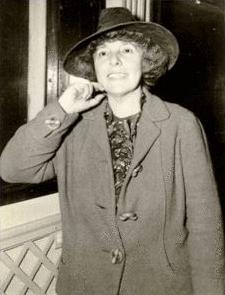
Dorothy Kenyon was a New York attorney, judge, feminist and political activist in support of civil liberties. During the era of McCarthyite persecution, she was accused of being affiliated with 28 communist front organizations. Kenyon was a charismatic speaker, and she regularly travelled throughout the U.S. lecturing about civil liberties, the law, and women's equality.

Morris Leopold Ernst was an American lawyer and prominent attorney for the American Civil Liberties Union (ACLU). In public life, he defended and asserted the rights of Americans to privacy and freedom from censorship, playing a significant role in challenging and overcoming the banning of certain works of literature and in asserting the right of media employees to organize labor unions. He also promoted an anti-communist stance within the ACLU itself, and was a member of the President's Committee on Civil Rights.

David D. Cole is the National Legal Director of the American Civil Liberties Union (ACLU). Before joining the ACLU in July 2016, Cole was the Hon. George J. Mitchell Professor in Law and Public Policy at the Georgetown University Law Center from March 2014 through December 2016. He has published in various legal fields including constitutional law, national security, criminal justice, civil rights, and law and literature. Cole has litigated several significant First Amendment cases in the Supreme Court of the United States, as well a number of influential cases concerning civil rights and national security. He is also a legal correspondent to several mainstream media outlets and publications.
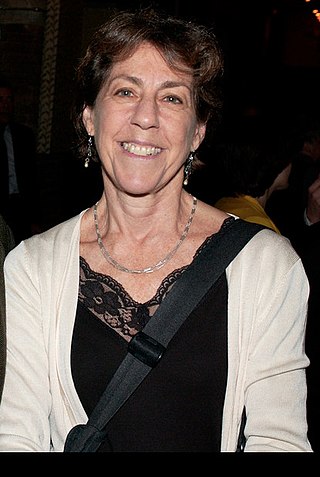
Marjorie Heins is a First Amendment lawyer, writer and founder of the Free Expression Policy Project.

The New York Civil Liberties Union (NYCLU) is a civil rights organization in the United States. Founded in November 1951 as the New York affiliate of the American Civil Liberties Union, it is a not-for-profit, nonpartisan organization with nearly 50,000 members across New York State.
Walter Nelles was an American lawyer and law professor. Nelles is best remembered as the co-founder and first chief legal counsel of the National Civil Liberties Bureau and its successor, the American Civil Liberties Union. In this connection, Nelles achieved public notice for his legal work on behalf of pacifists charged with violating the Espionage Act during World War I and in other politically charged civil rights and constitutional law cases in later years.

Conrad Joseph Lynn was an African-American civil rights lawyer and activist known for providing legal representation for activists, including many unpopular defendants. Among the causes he supported as a lawyer were civil rights, Puerto Rican nationalism, and opposition to the draft during both World War II and the Vietnam War. The controversial defendants he represented included civil rights activist Robert F. Williams and Black Panther leader H. Rap Brown.

The American Civil Liberties Union of New Jersey (ACLU-NJ) is a nonpartisan, not-for-profit civil rights organization in Newark, New Jersey, and an affiliate of the national American Civil Liberties Union. According to the ACLU-NJ's stated mission, the ACLU-NJ operates through litigation on behalf of individuals, lobbying in state and local legislatures, and community education.

John de Leon is a retired Cuban-American attorney known for his work on immigration and civil rights issues. His cases were the subject of reports in The New York Times and ABC News and he was a frequent guest on Spanish-language news and opinion programs and local media discussing immigration and other human-rights topics. He also appeared as a legal commentator on CNN.

The Mundt–Nixon Bill, named after Karl Mundt and Richard Nixon, formally the Subversive Activities Control Act, was a proposed law in 1948 that would have required all members of the Communist Party of the United States register with the Attorney General.
American Committee for the Protection of Foreign Born was the successor group to the National Council for the Protection of the Foreign Born and its successor, seen by the US federal government as subversive for "protecting foreign Communists who come to this country," thus "enabling them to operate here.".
Thomas I. Emerson (1907–1991) was a 20th-century American attorney and professor of law. He is known as a "major architect of civil liberties law," "arguably the foremost First Amendment scholar of his generation," and "pillar of the Bill of Rights."

The ACLU of Hawaiʻi is an affiliate of the American Civil Liberties Union. As a 501(c)(4) nonprofit organization, it focuses on advocacy for civil rights and civil liberties in Hawaii, American Samoa and Guam.
The American Civil Liberties Union (ACLU) is an American nonprofit human rights organization founded in 1920.
References
- 1 2 3 4 5 Stern, Michael (December 22, 1968). "Civil-Liberties Units Expanding; Top Organizations to Broaden Scope of Activities" . The New York Times . Retrieved February 4, 2014.
- 1 2 3 Kovach, Bill (December 10, 1968). "Boy, 11, Sues for Right of Petition to Oust Principal" (PDF). The New York Times. Retrieved February 4, 2014.
- ↑ "Lamont Denies Joining the Communist Party" (PDF). The New York Times. May 14, 1971. Retrieved February 4, 2014.
- 1 2 Bamberger, Werner (June 16, 1977). "Clark H. Foreman, 75; Former Head of Emergency Civil Liberties Group" (PDF). The New York Times. Retrieved February 4, 2014.
- ↑ "2 of 41 sponsors Quit Liberties Unit" (PDF). The New York Times. January 20, 1953. Retrieved February 4, 2014.
- ↑ "HOUSE OE REPRESENTATIVES EIGHTY-FOURTH CONGRESS SECOND SESSION JUNE 12 AND 13, 1956 pp 4510-4533". Washington, U.S. Govt. Print. Off. – via Internet Archive.
- ↑ Lewis, Anthony (June 17, 1958). "Supreme Court, 5-4, VoidsPassport Denials to Reds" (PDF). The New York Times. Retrieved February 5, 2014.
- ↑ Pomfret, John D. (May 25, 1965). "High Court Voids Law Curbing Red Propaganda" (PDF). The New York Times. Retrieved February 2, 2014.
- ↑ Sterba, James P. (December 31, 1968). "Schools Clarify Girl Slacks Rule" (PDF). The New York Times. Retrieved February 4, 2014.
- ↑ "Civil rights rider keep fight alive". Star-News . Wilmington, NC. Associated Press. January 30, 1983. Retrieved February 5, 2014– via Google News Archive.
- ↑ Pace, Eric (July 13, 1993). "James Peck, 78, Union Organizer Who Promoted Civil Rights Causes" . The New York Times. Retrieved February 5, 2014.
- ↑ "Court Rules U.S. Was Wrong To Deny Visa to Mrs. Allende" . The New York Times. April 17, 1988. Retrieved February 5, 2014.
- ↑ "Allende Widow Starts U.S. Tour" . The New York Times. December 13, 1985. Retrieved February 5, 2014.
- ↑ Glueck, Grace (June 6, 1990). "Suit Seeks to End Curbs on Importing Cuban Art" . The New York Times. Retrieved February 4, 2014.
- ↑ Fernandes, Sujatha (2006). Cuba Represent! Cuban Arts, State Power, and the Making of New Revolutionary Cultures. Duke University Press. p. 143. ISBN 9780822388227 . Retrieved 27 March 2022.
{{cite book}}: CS1 maint: location missing publisher (link) - ↑ Burnett, Victoria (December 29, 2014). "Cuba's Art Scene Awaits a Travel Boom". The New York Times . Retrieved 27 March 2022.
- ↑ "Ban on Cuban Art Is Eased" . The New York Times. April 2, 1991. Retrieved February 4, 2014.
- ↑ Haberman, Clyde (January 20, 1998). "Leftists Steal Enemy Tactic: The Merger". The New York Times. Retrieved February 4, 2014.
- ↑ Karlin, Daniel (June 29, 2018). "My Friend Bob". The Times Literary Supplement . Retrieved July 6, 2018.